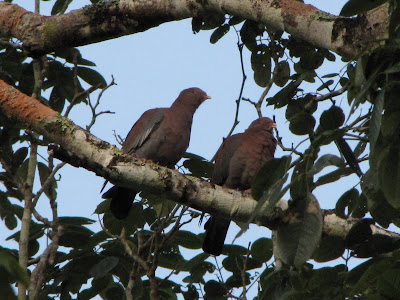 Scientific Name: Campylorhynchus zonatus
Scientific Name: Campylorhynchus zonatusPopulation Estimate: 500K to 5M
Range / Habitat: Year-round in lowland and higher-altitude moist forest from eastern Mexico to northern Ecuador.
Field Notes: Large wren, found high in trees. Loud, raucous call. Can be quite aggressive with one another. Distinctive in range with boldly streaked back, white supercilium, white chest with black spots, rufous belly.
Personal Notes: Seen (and heard!) most mornings at Chaa Creek Resort.





































